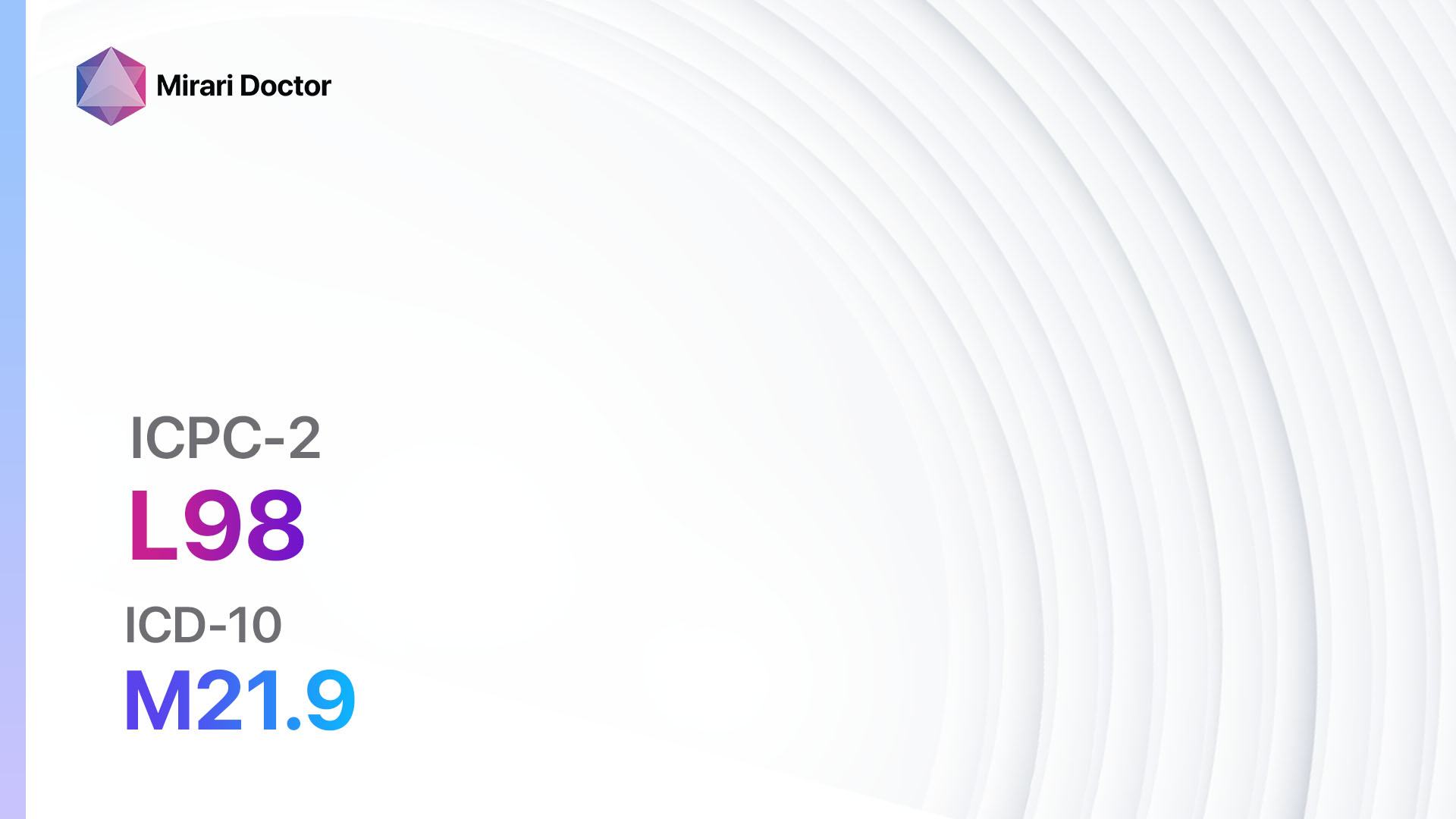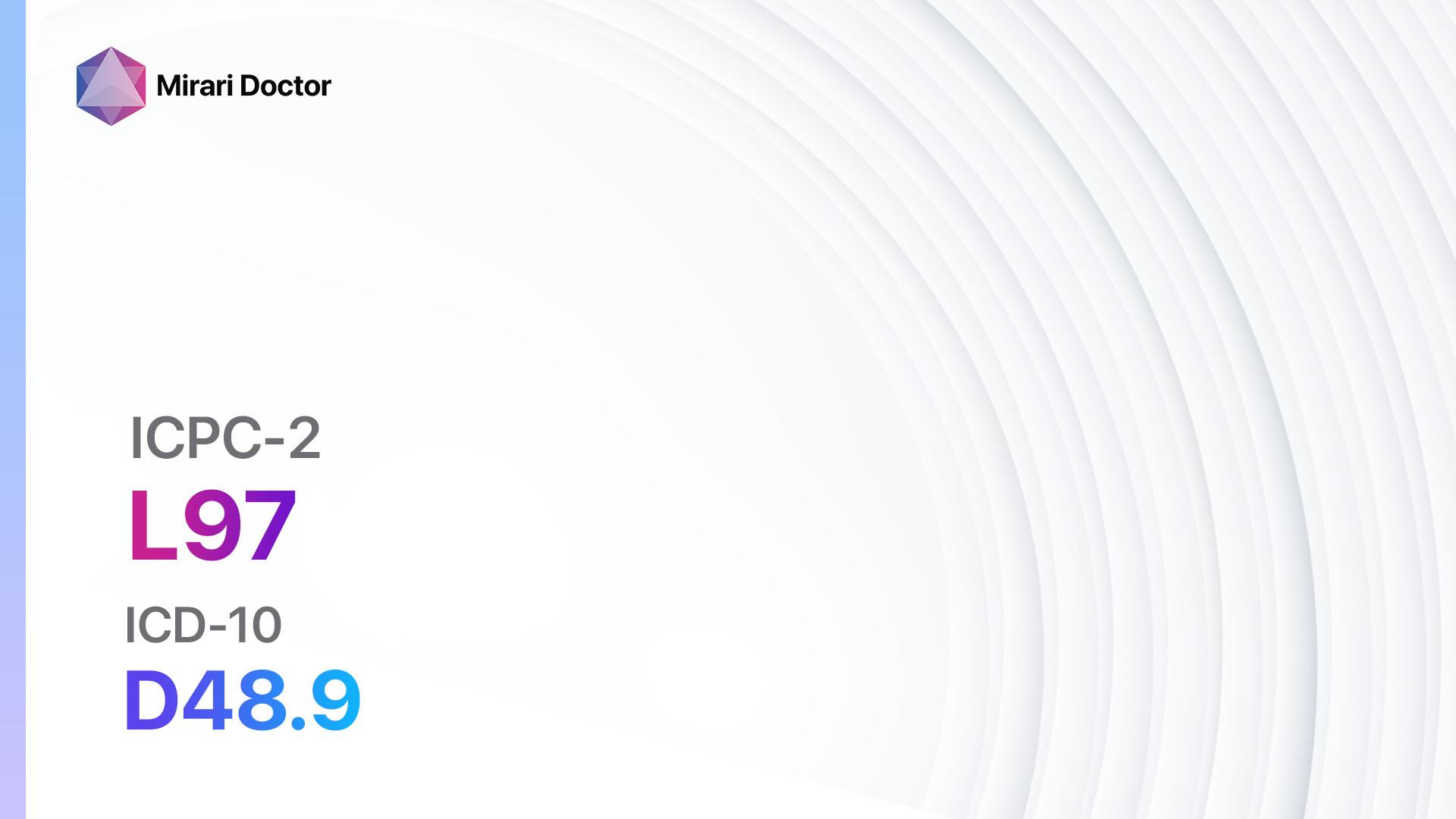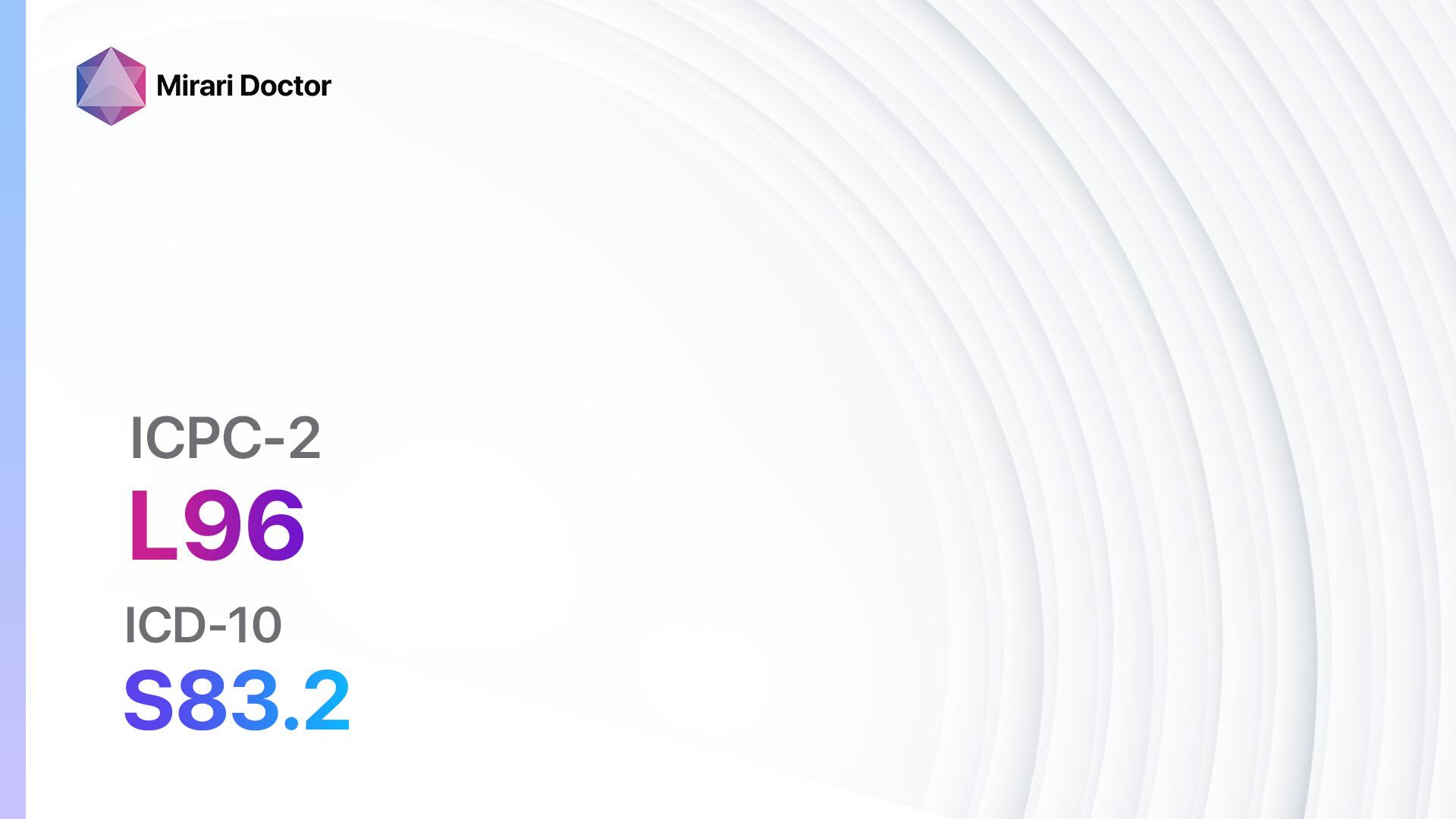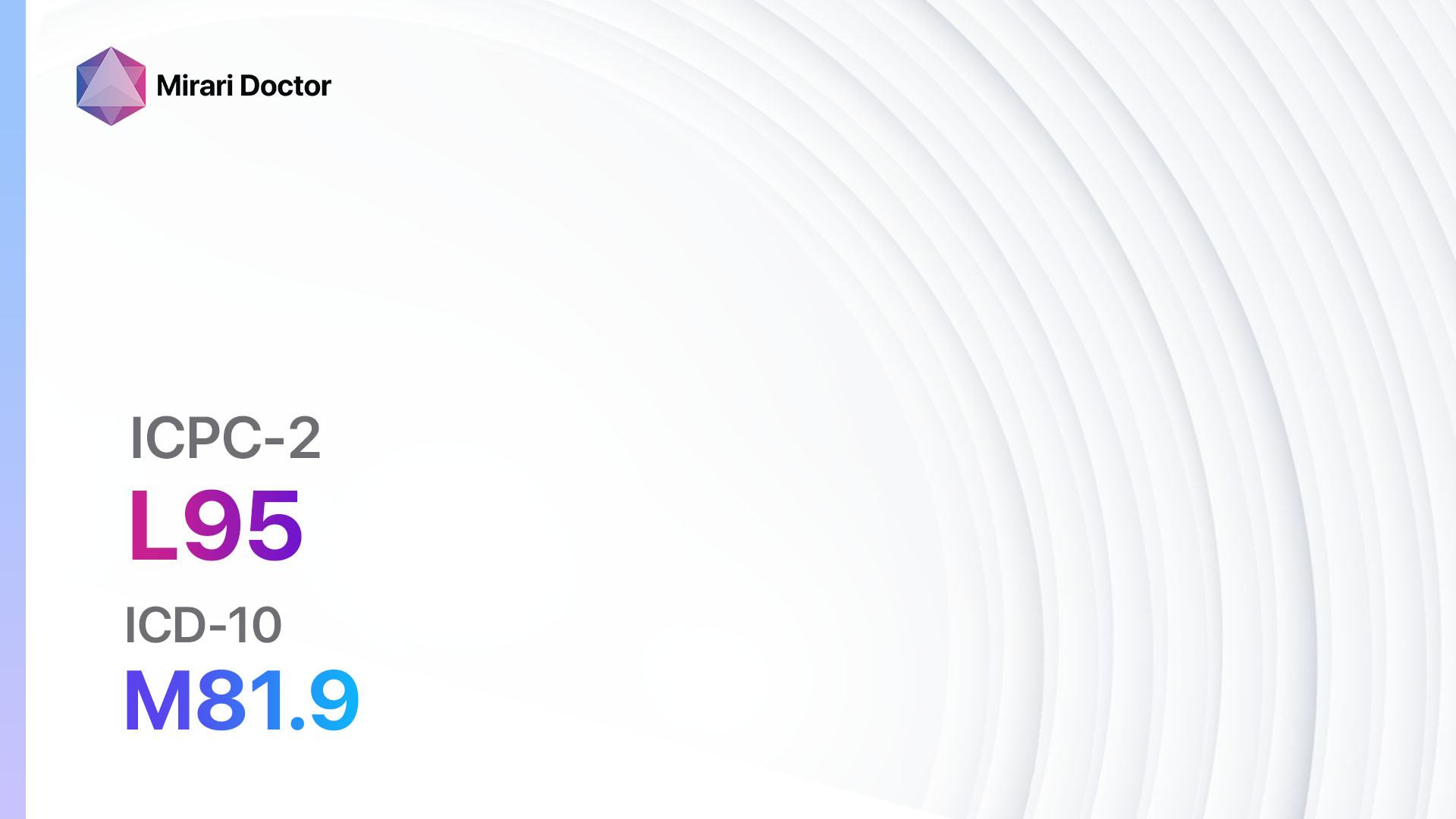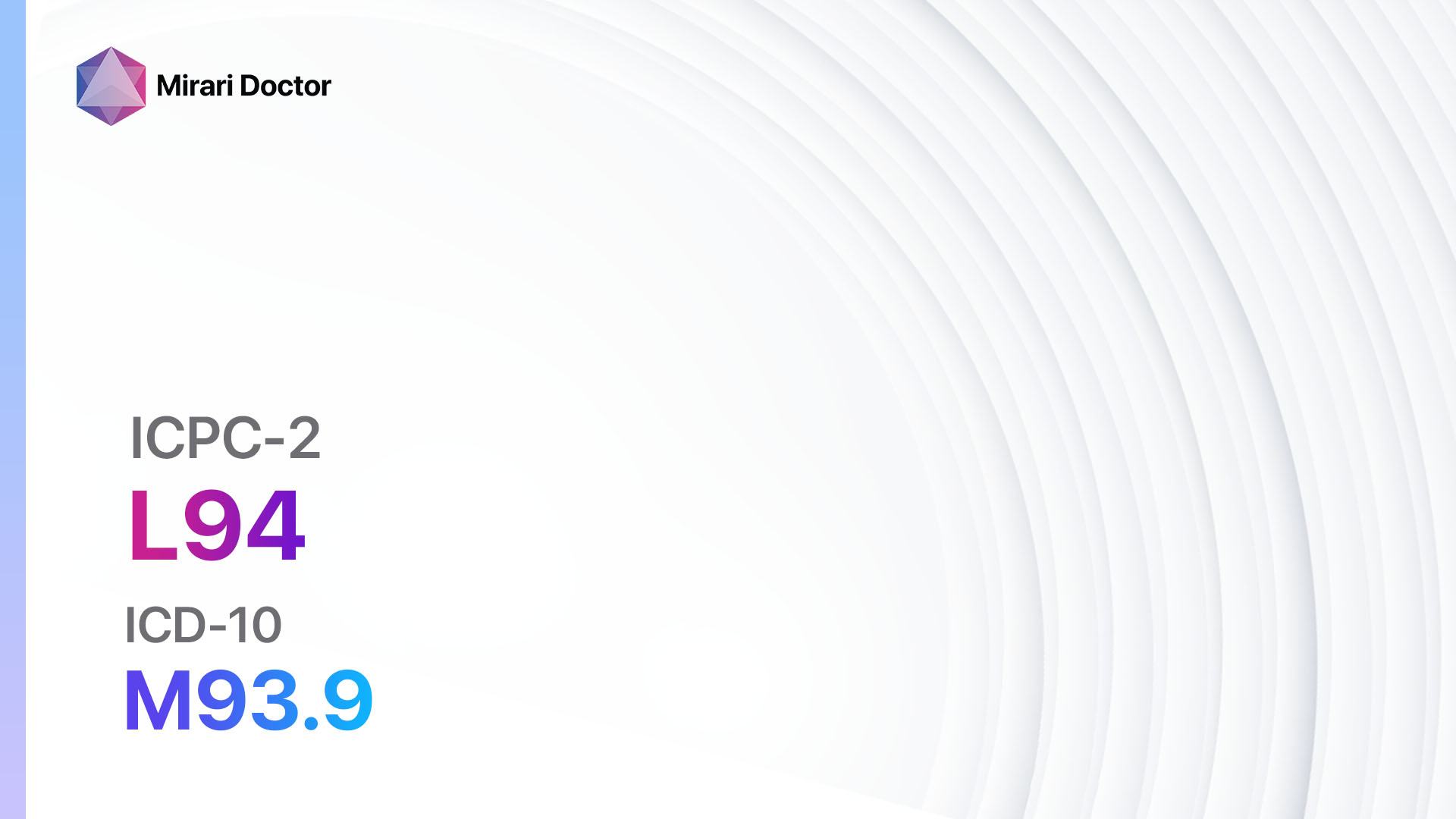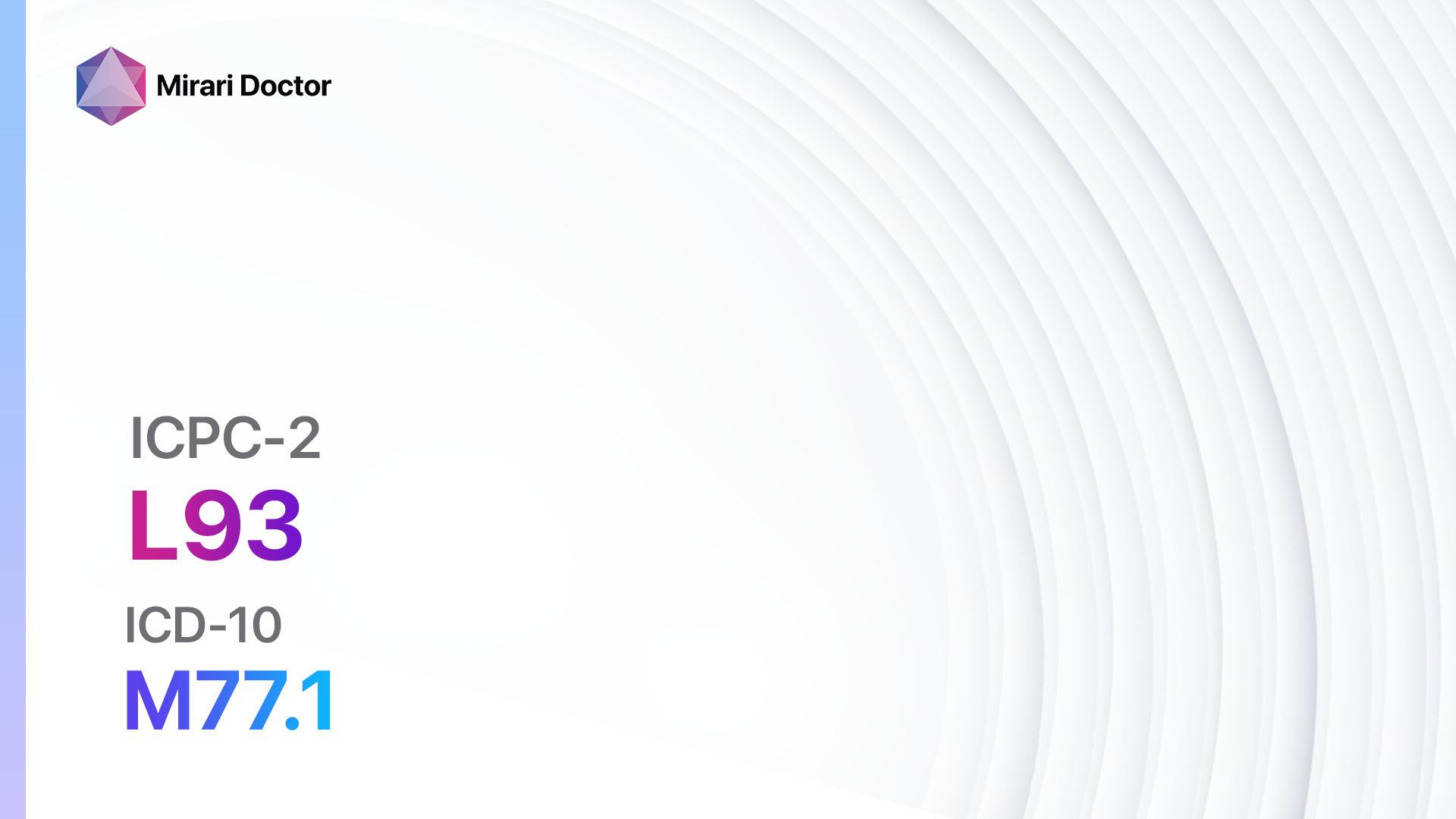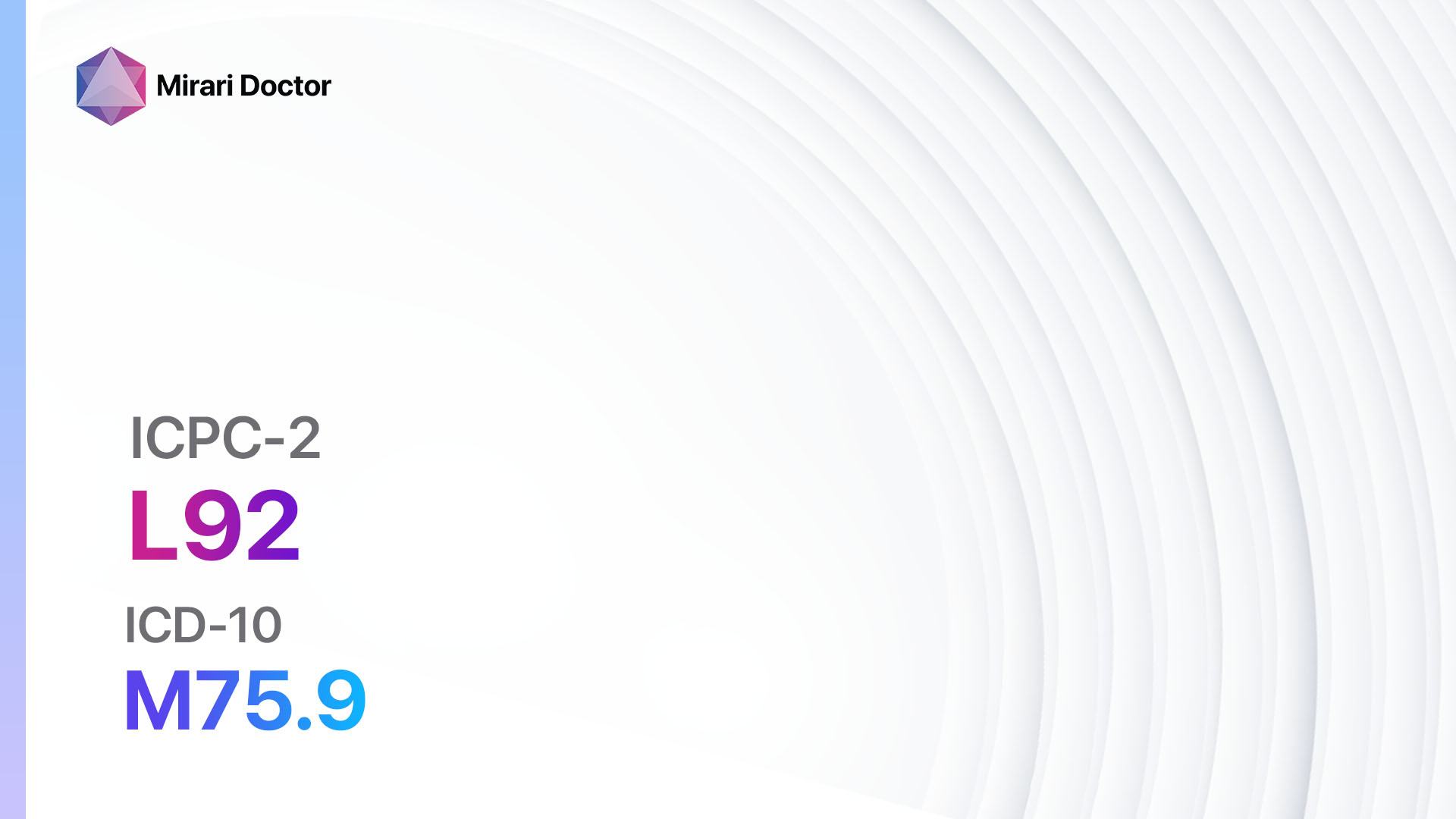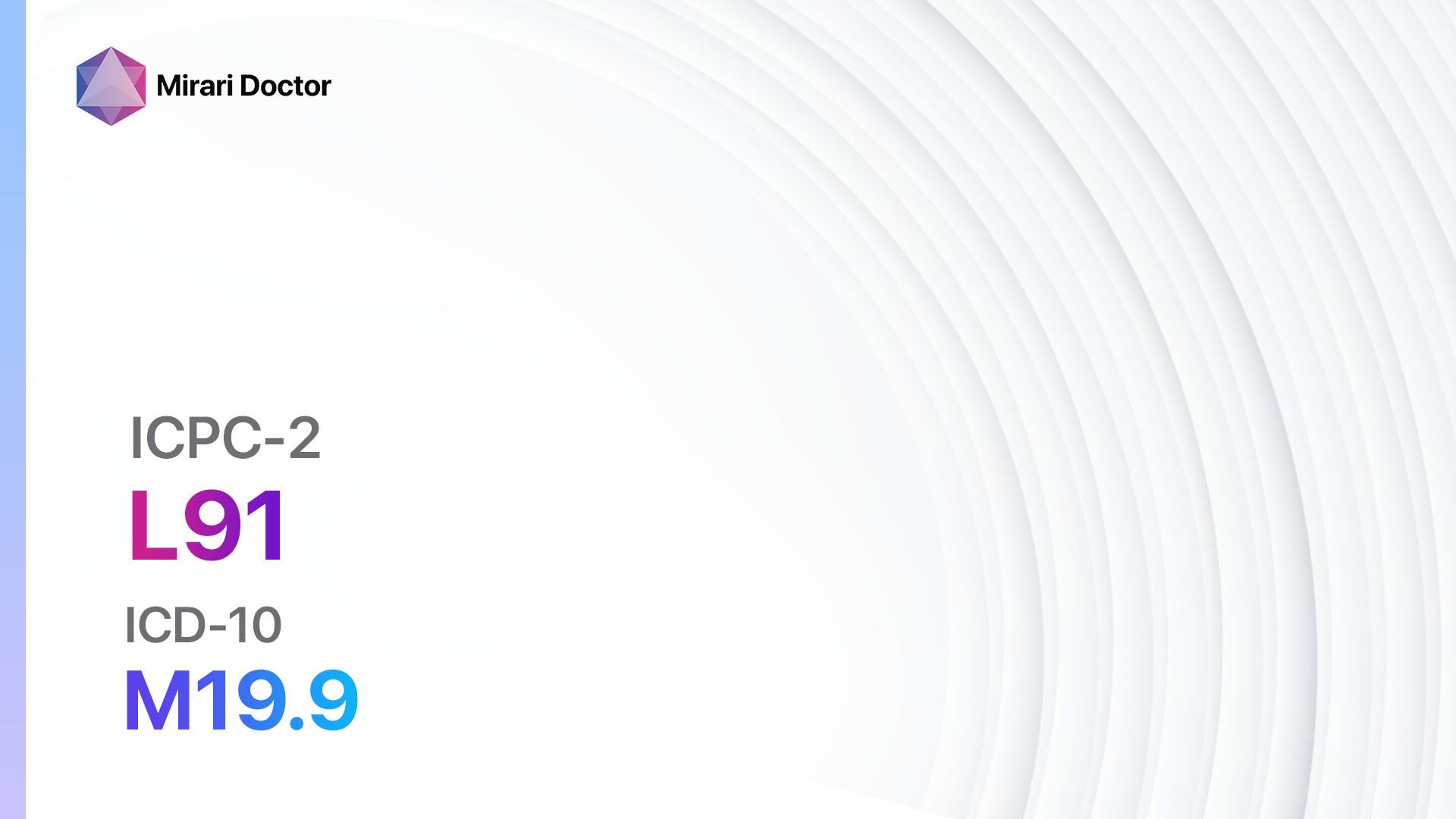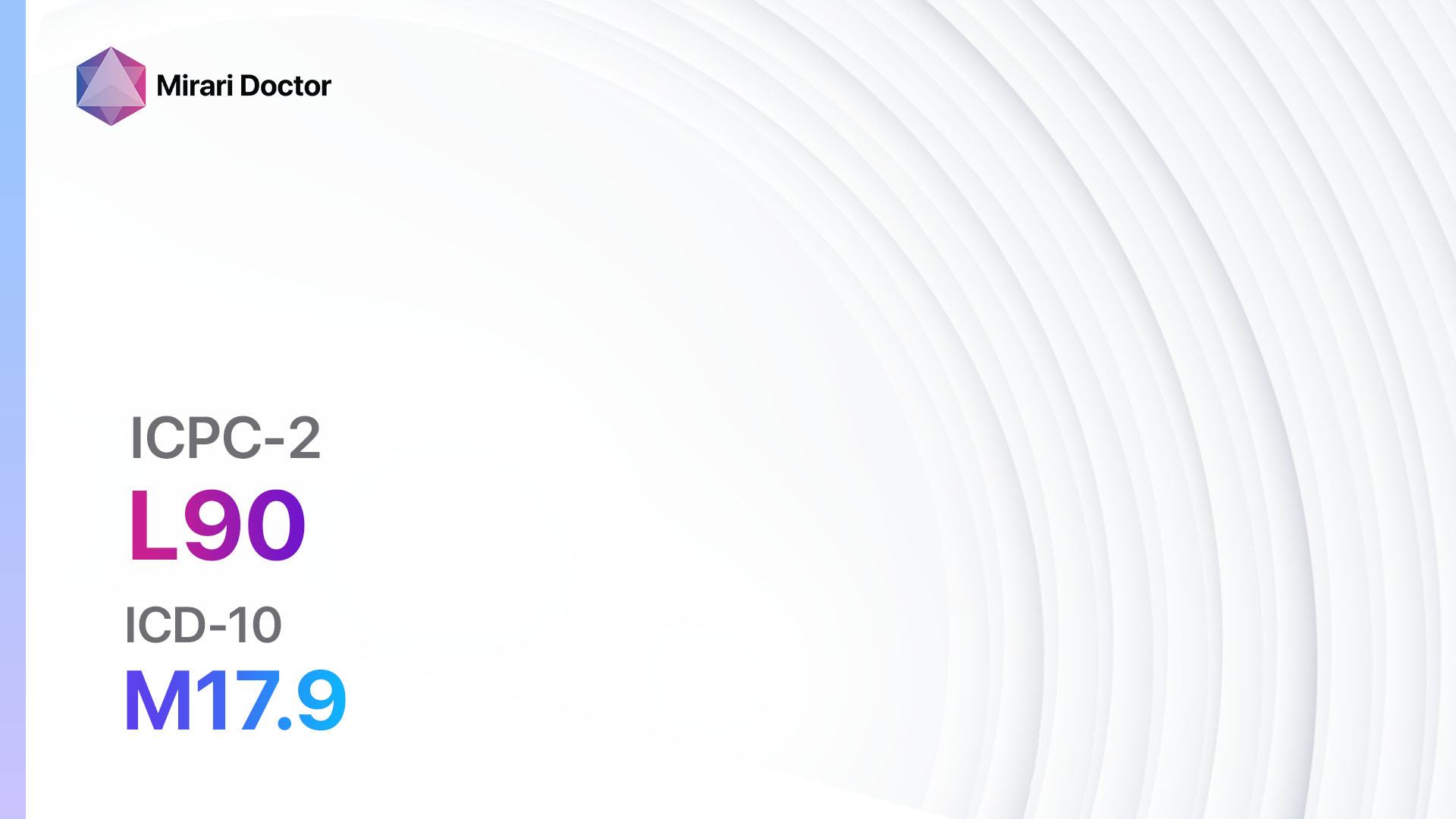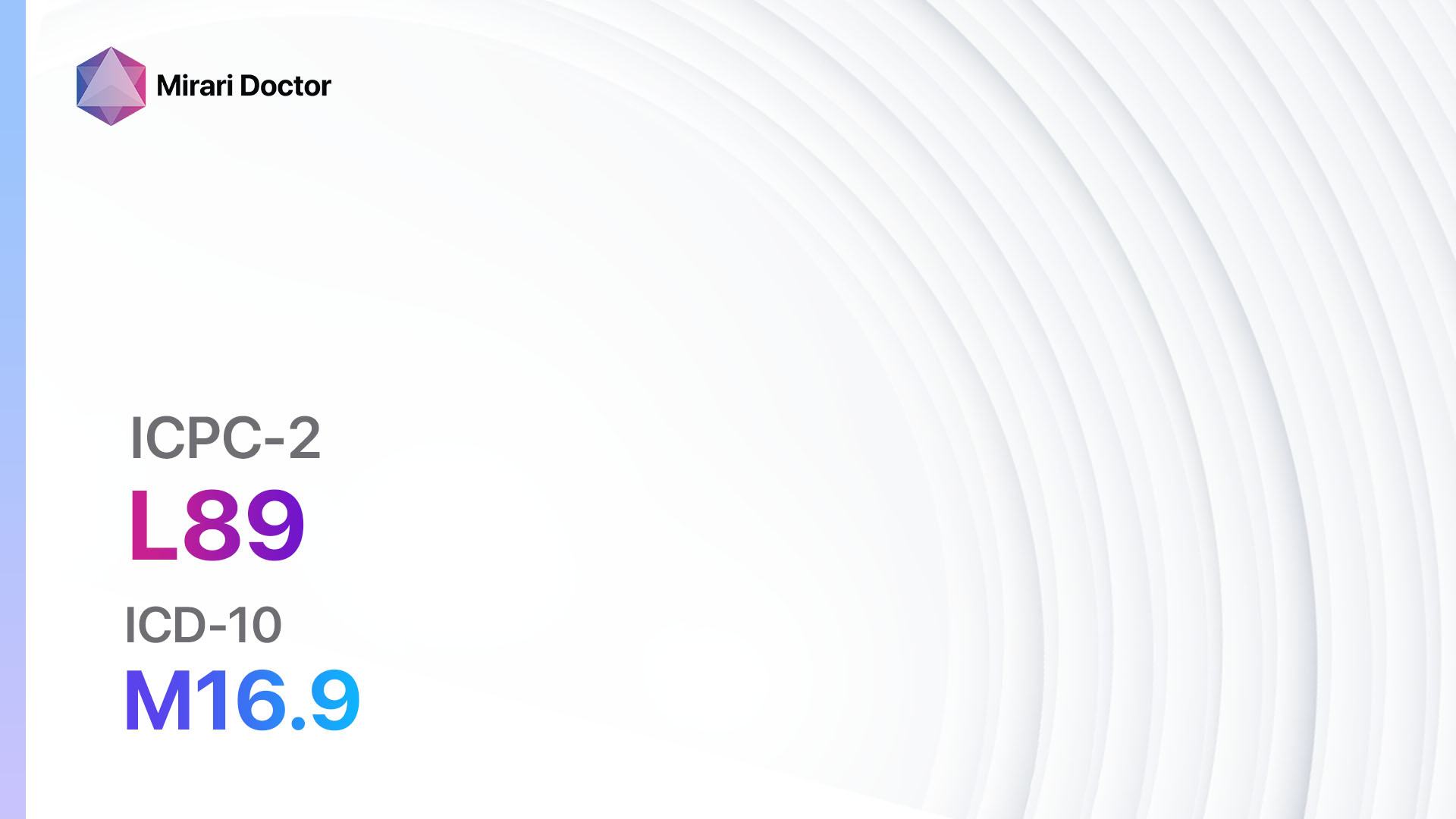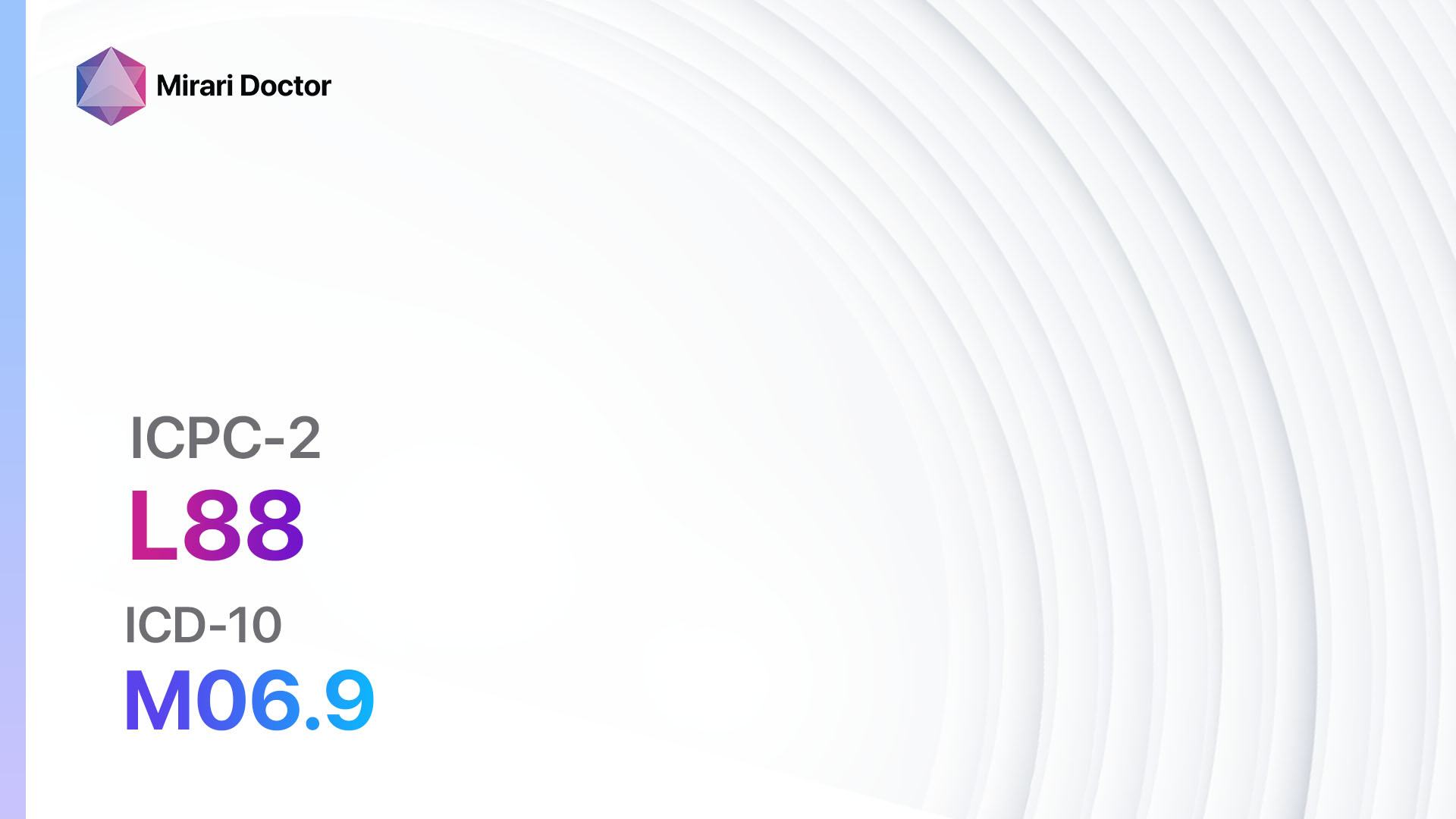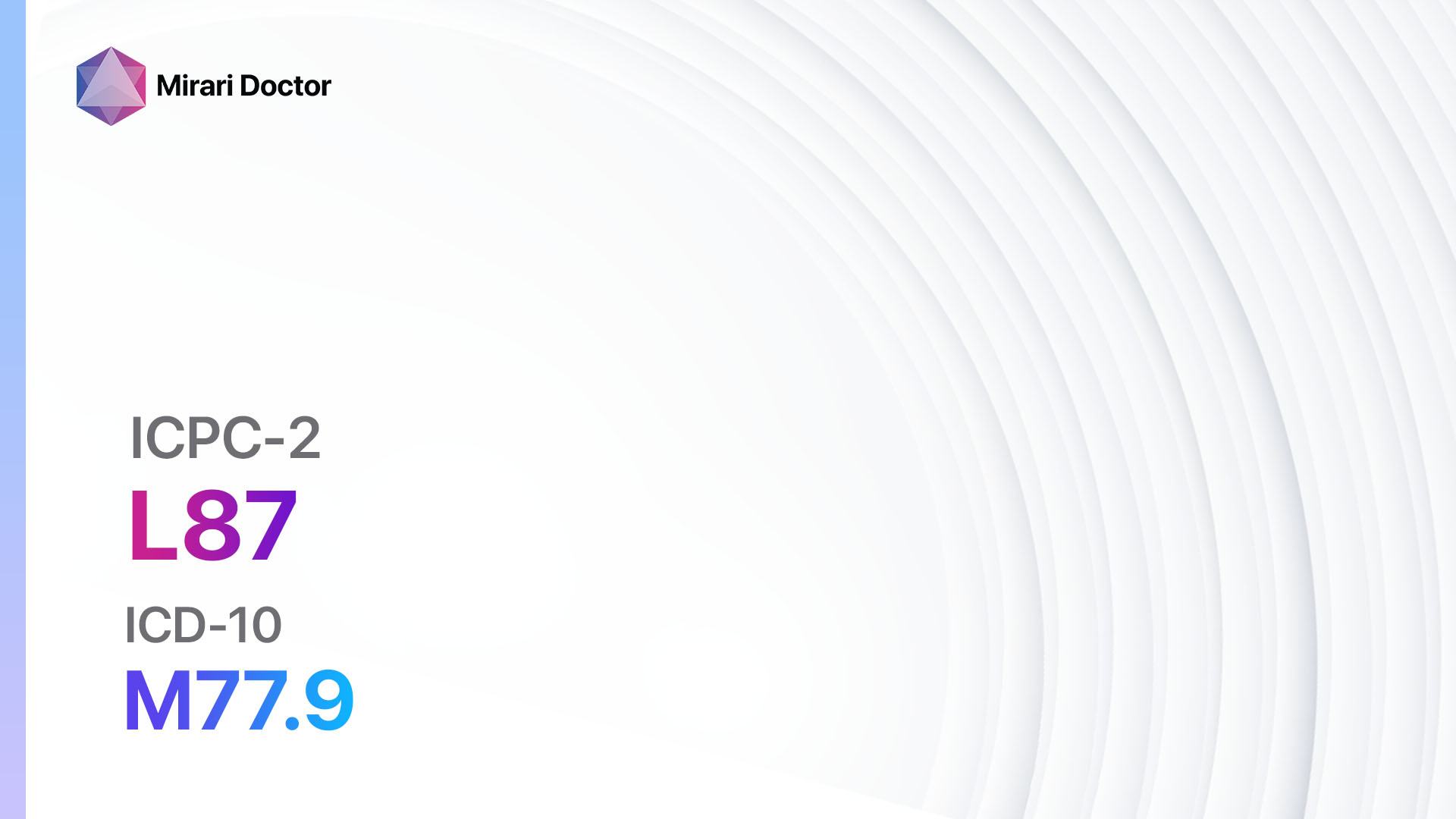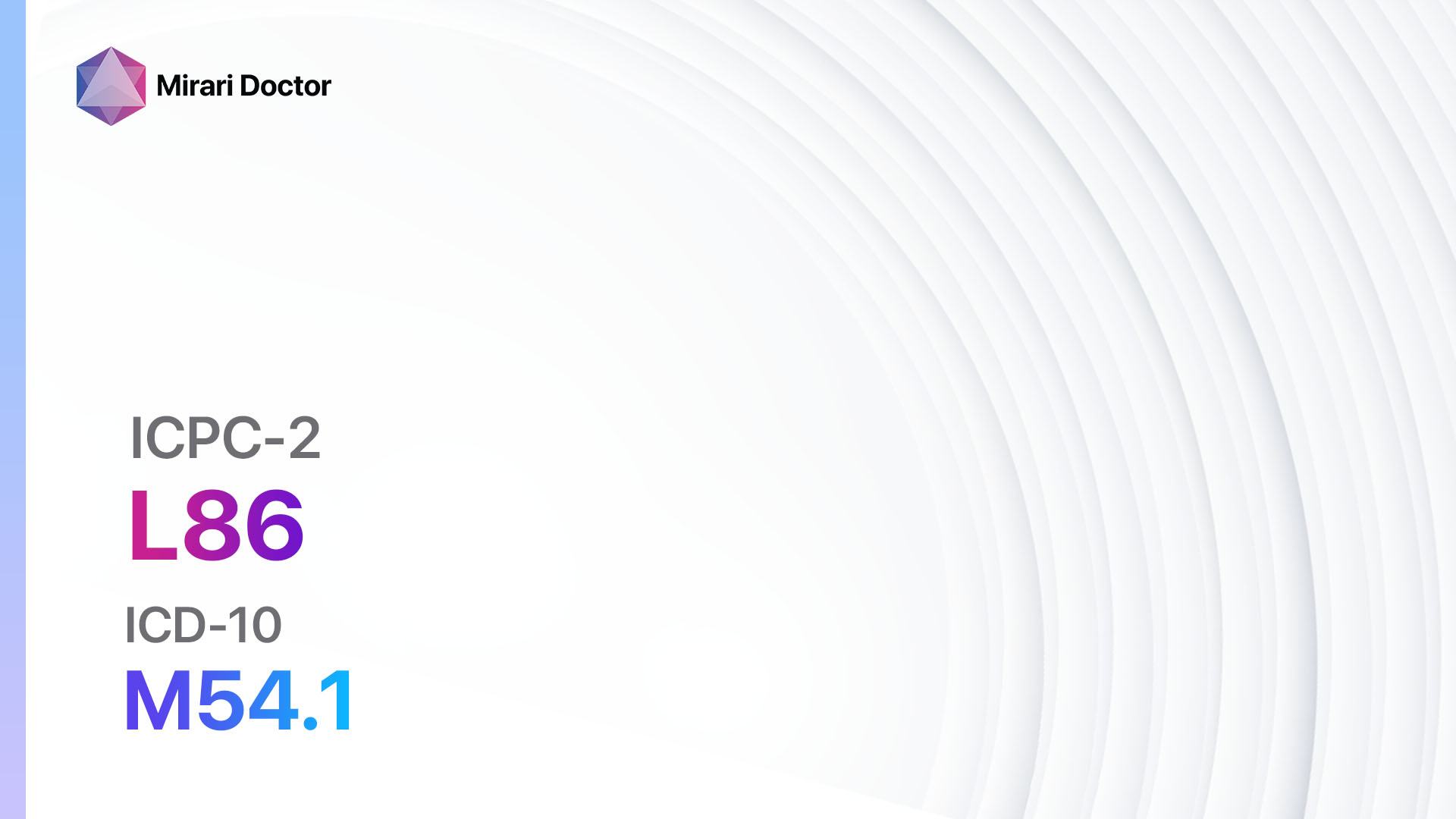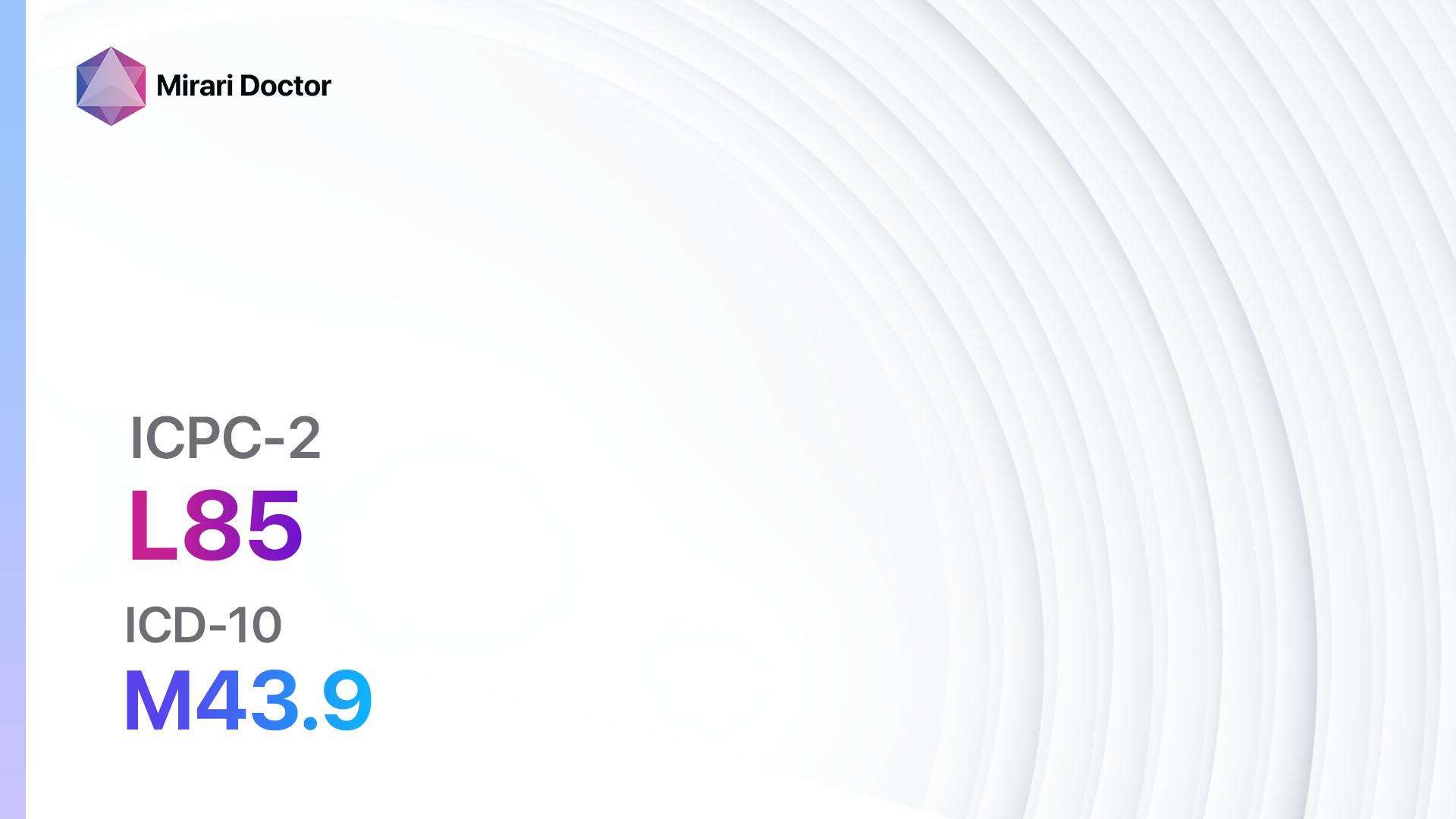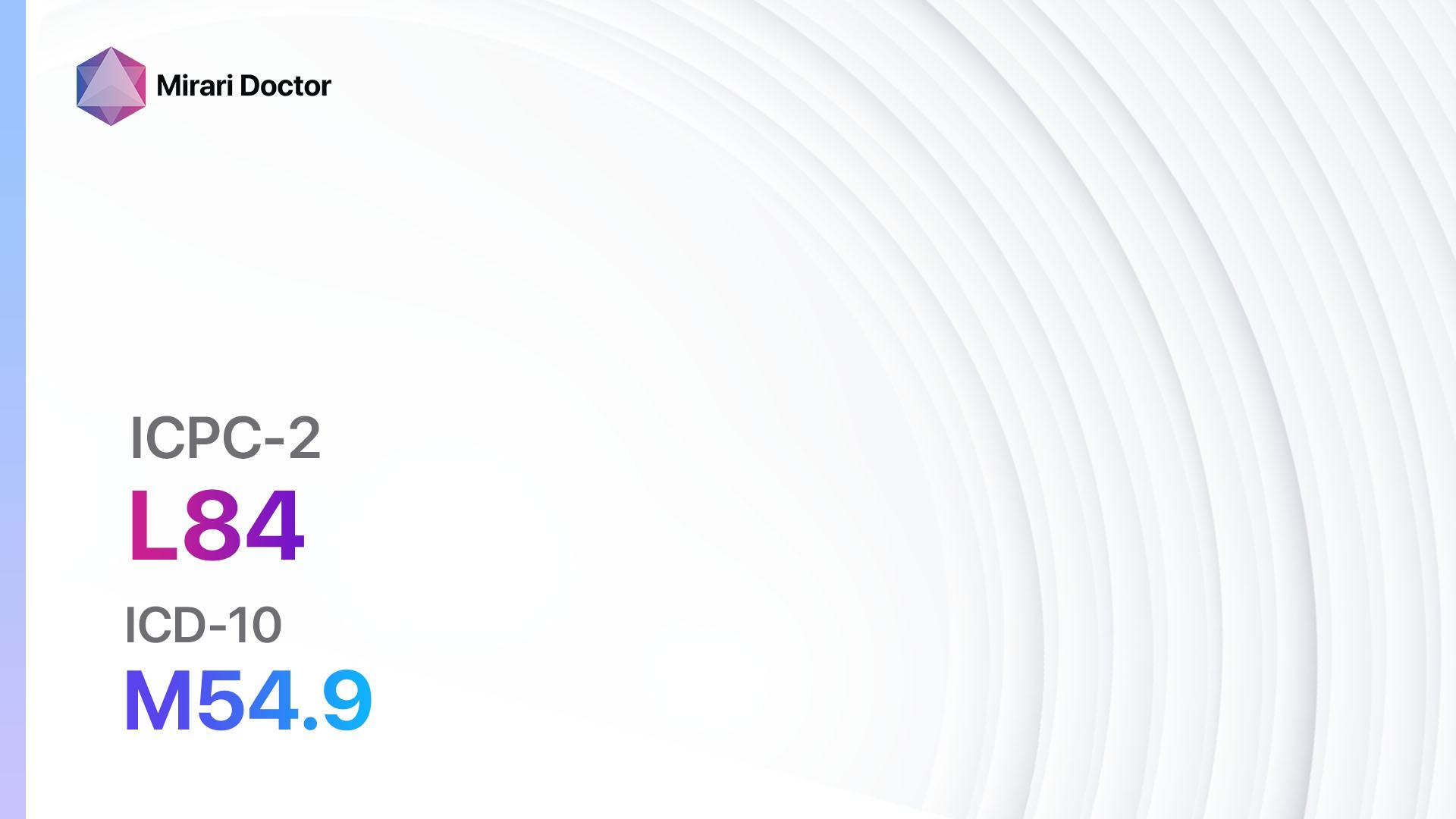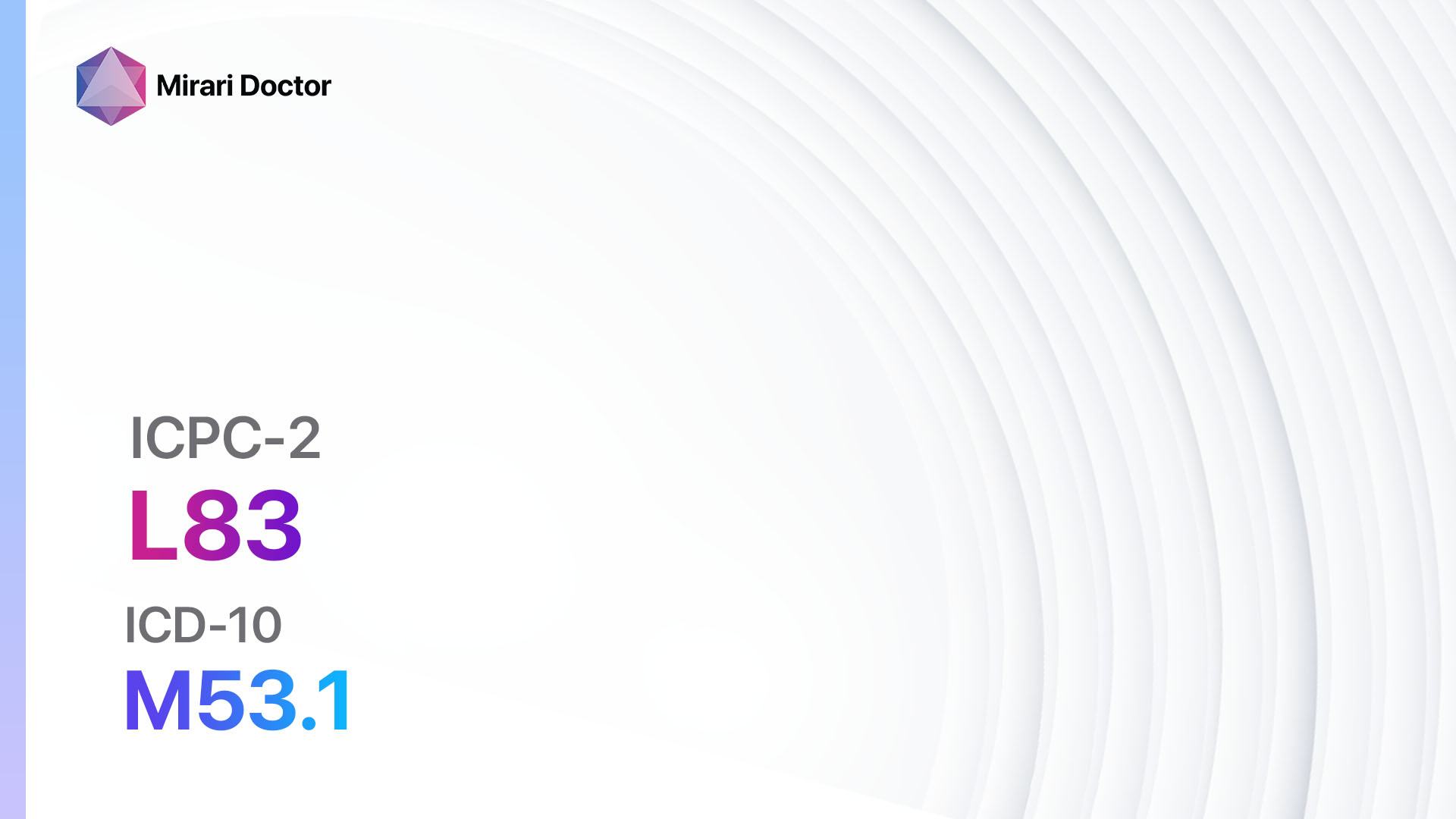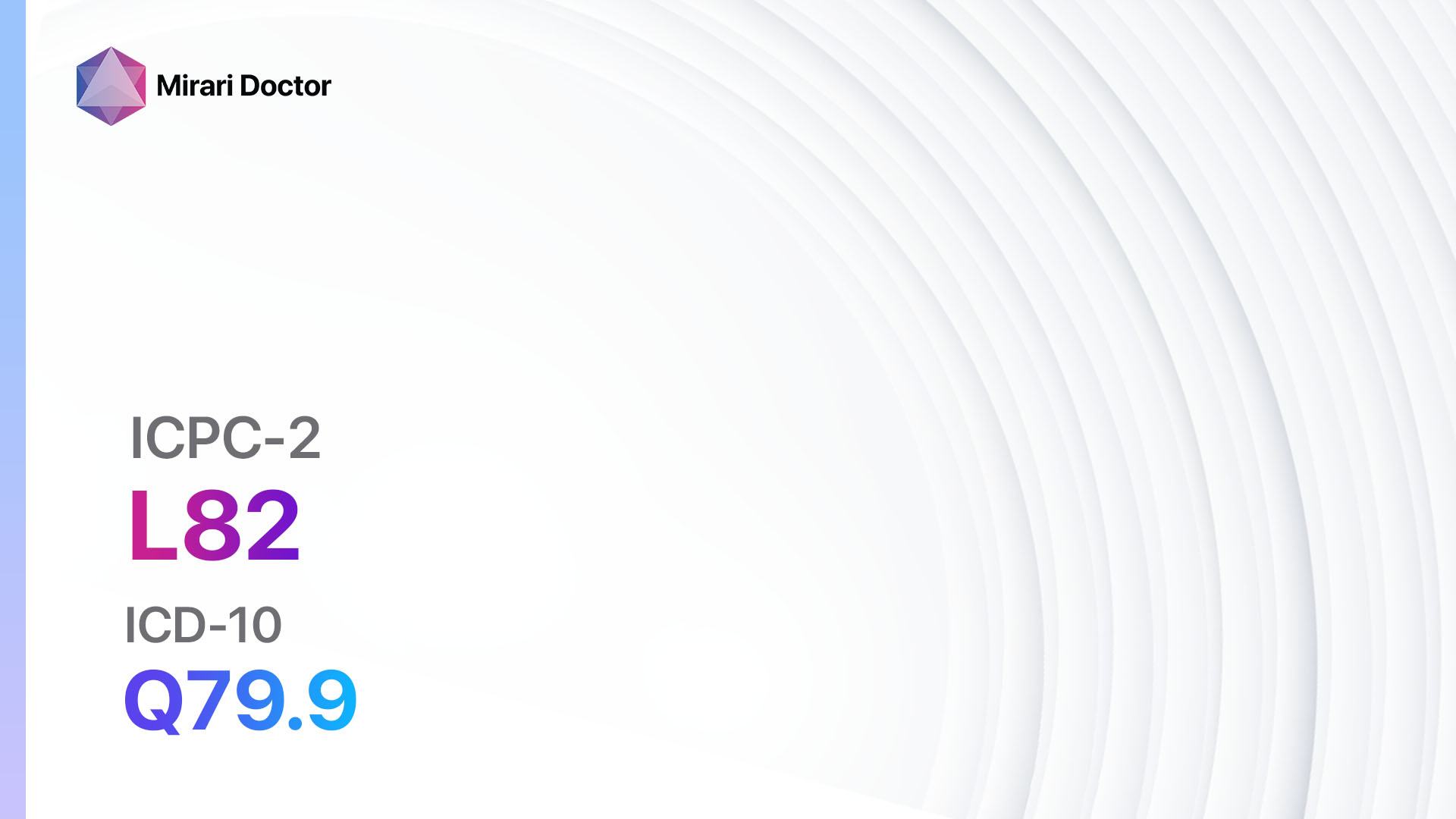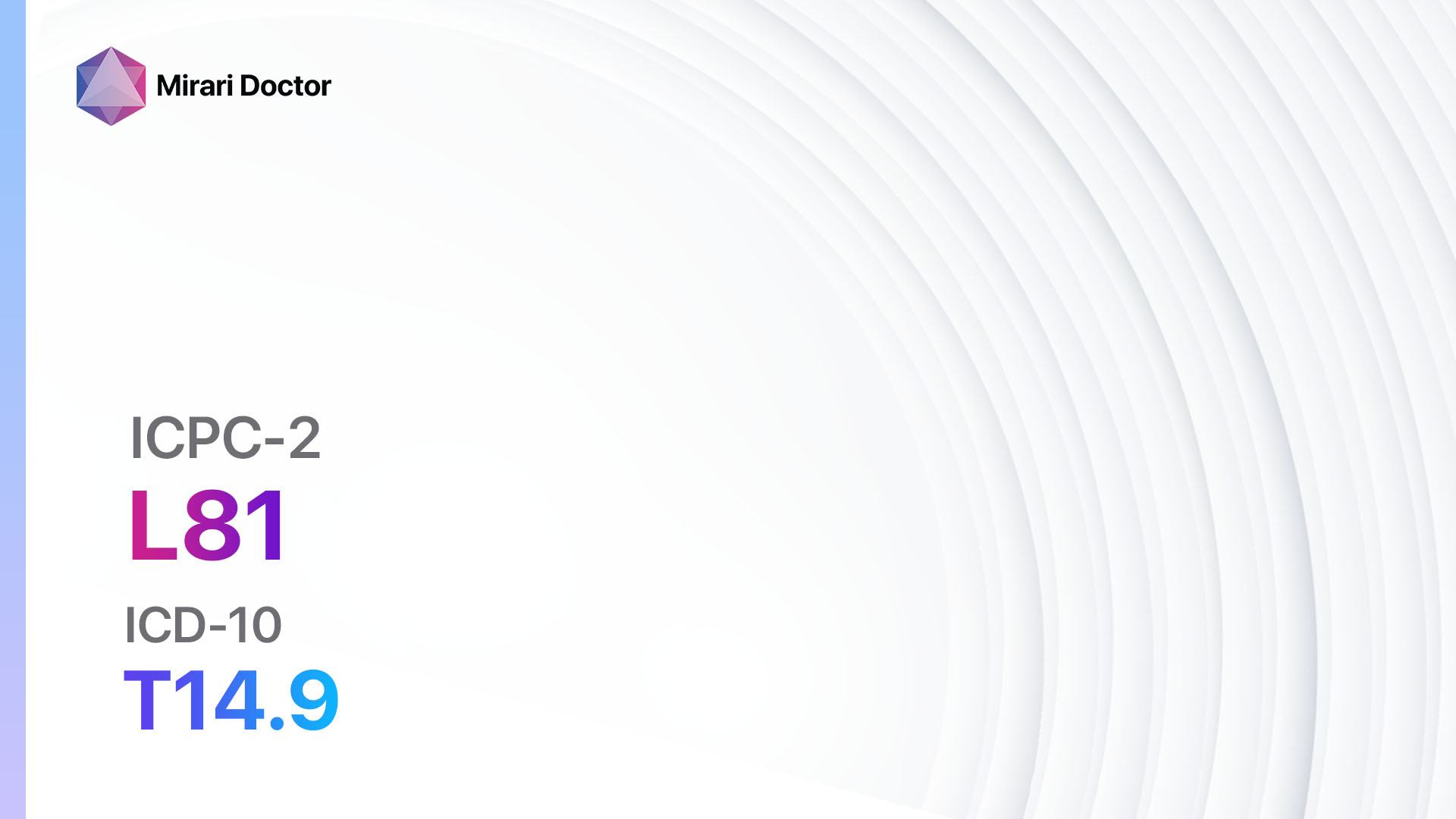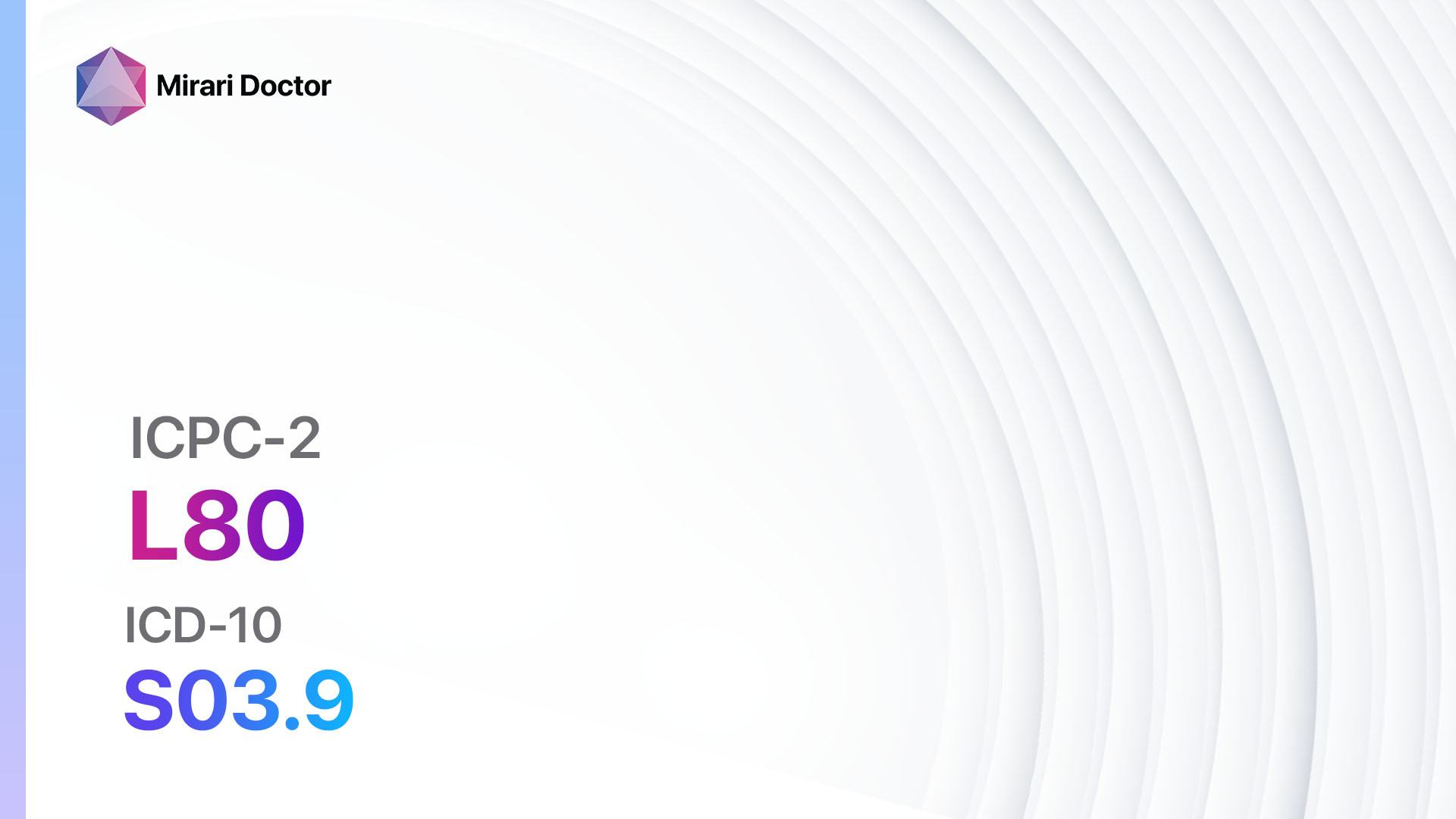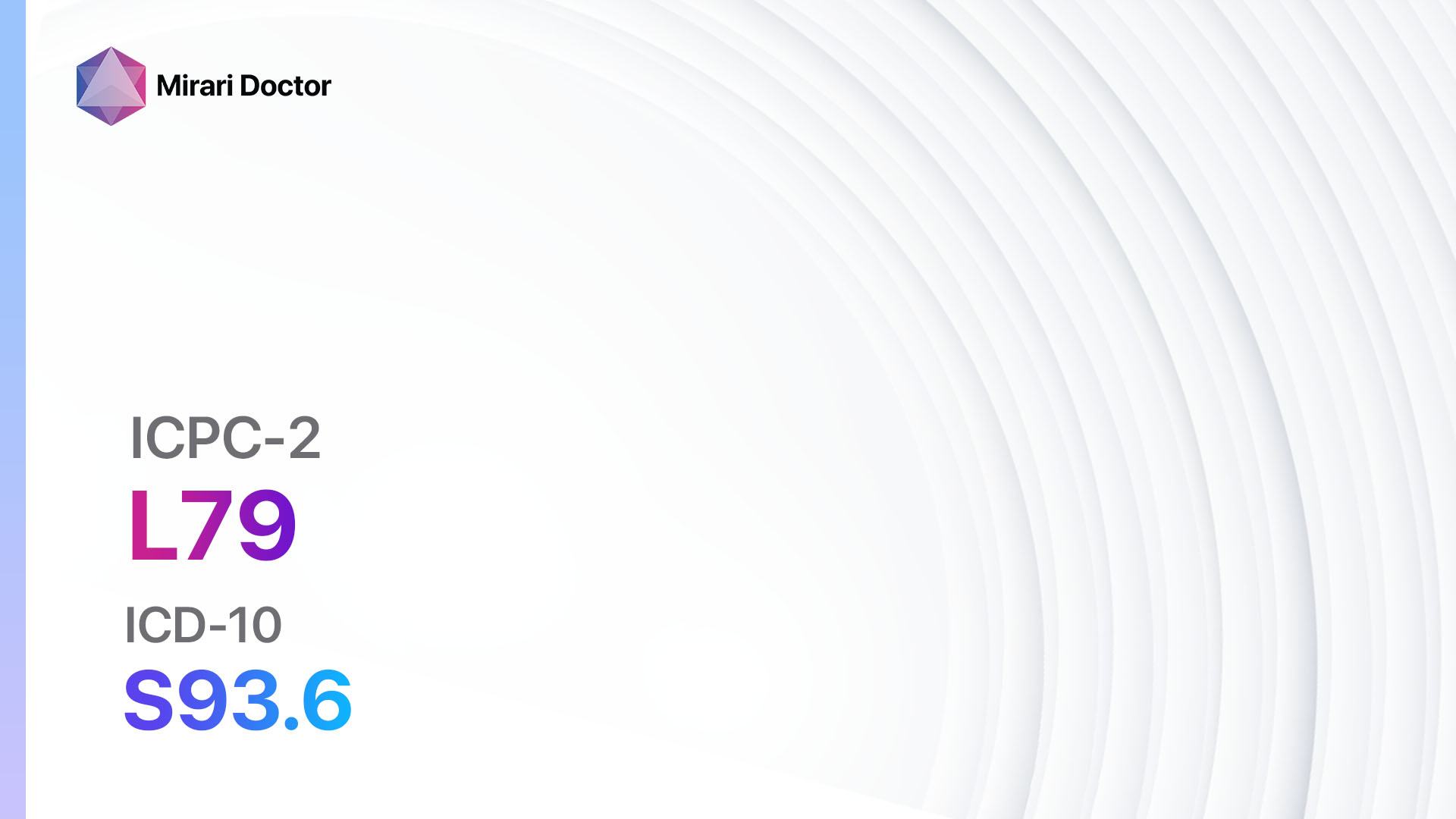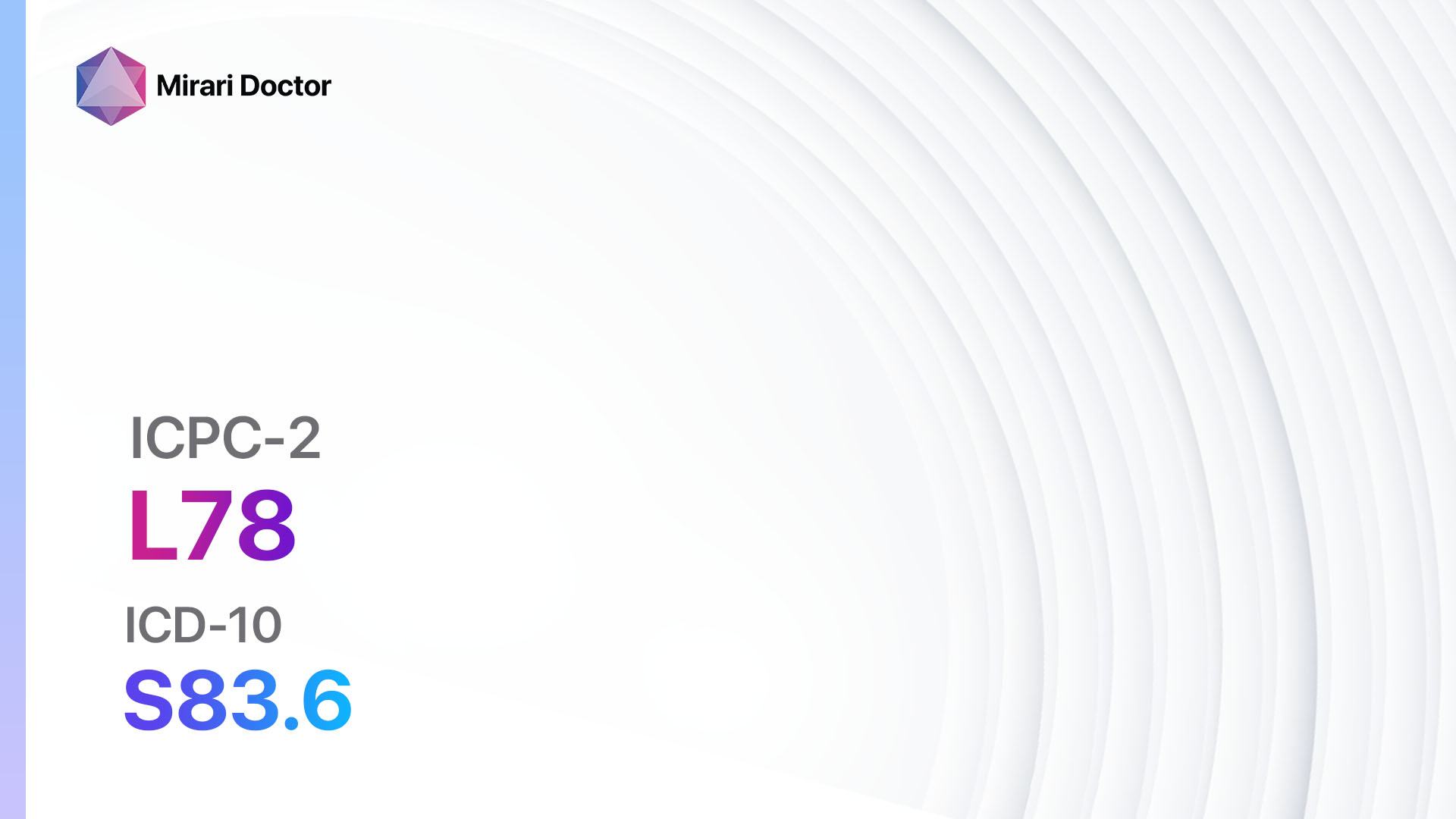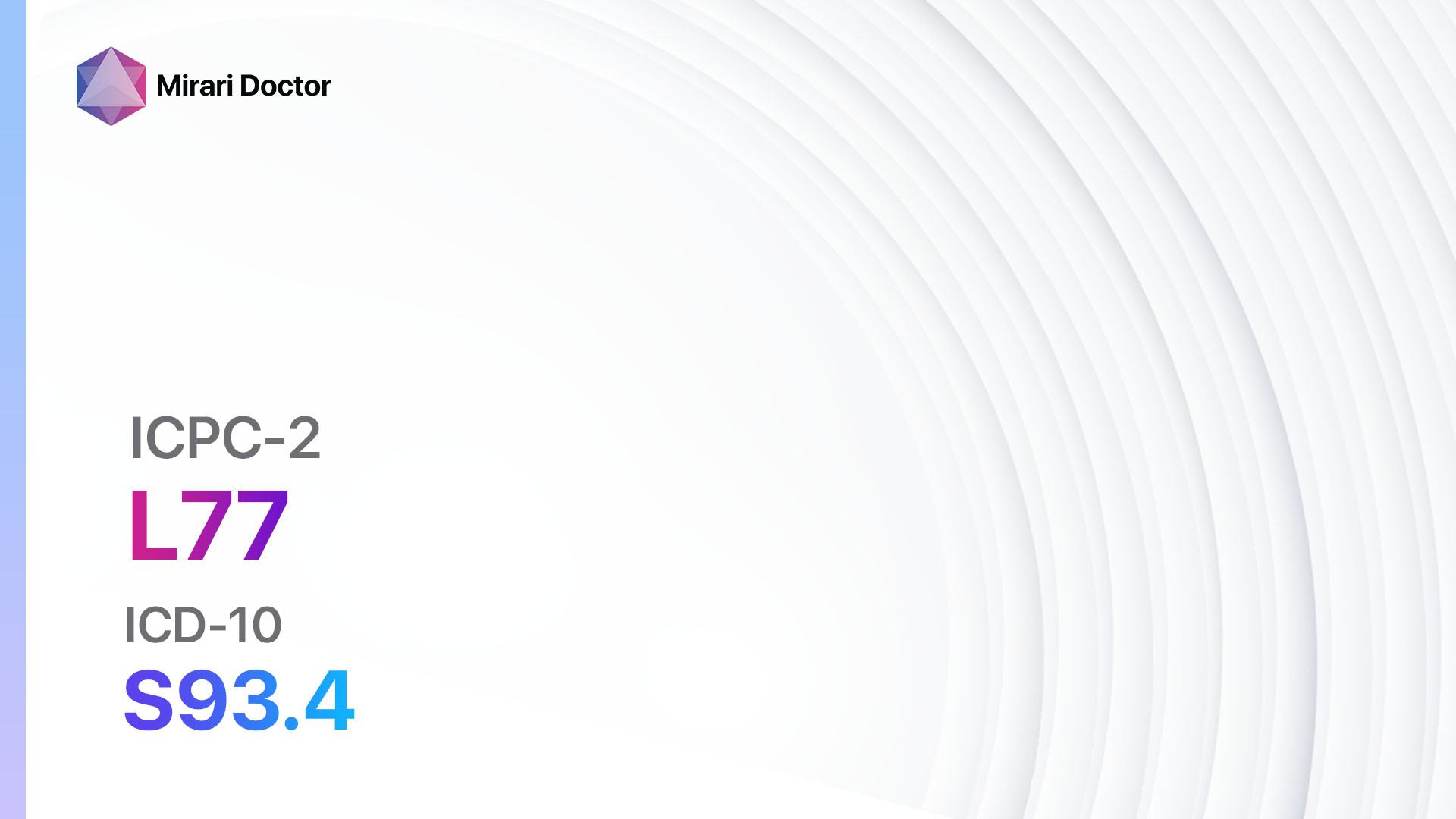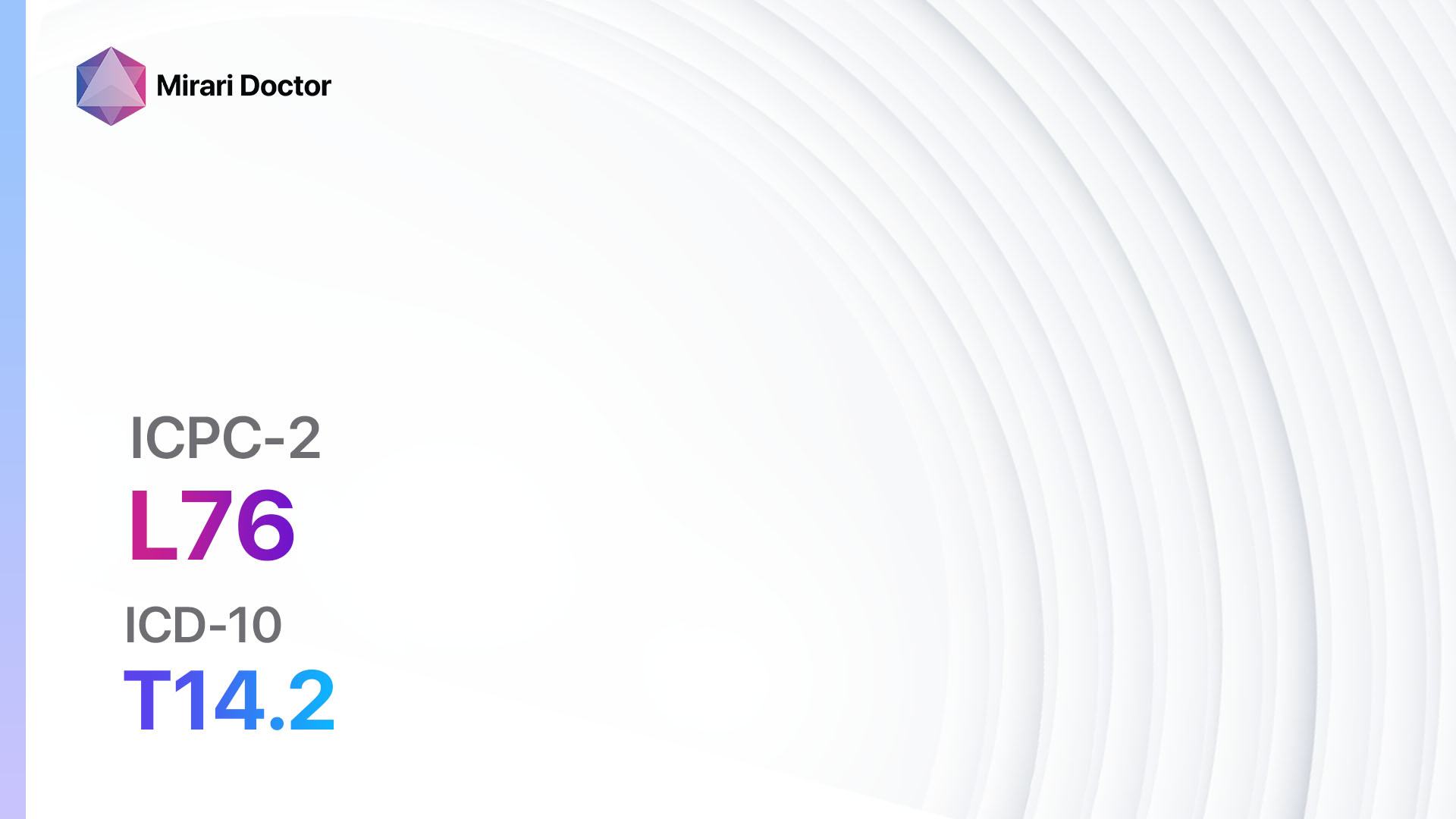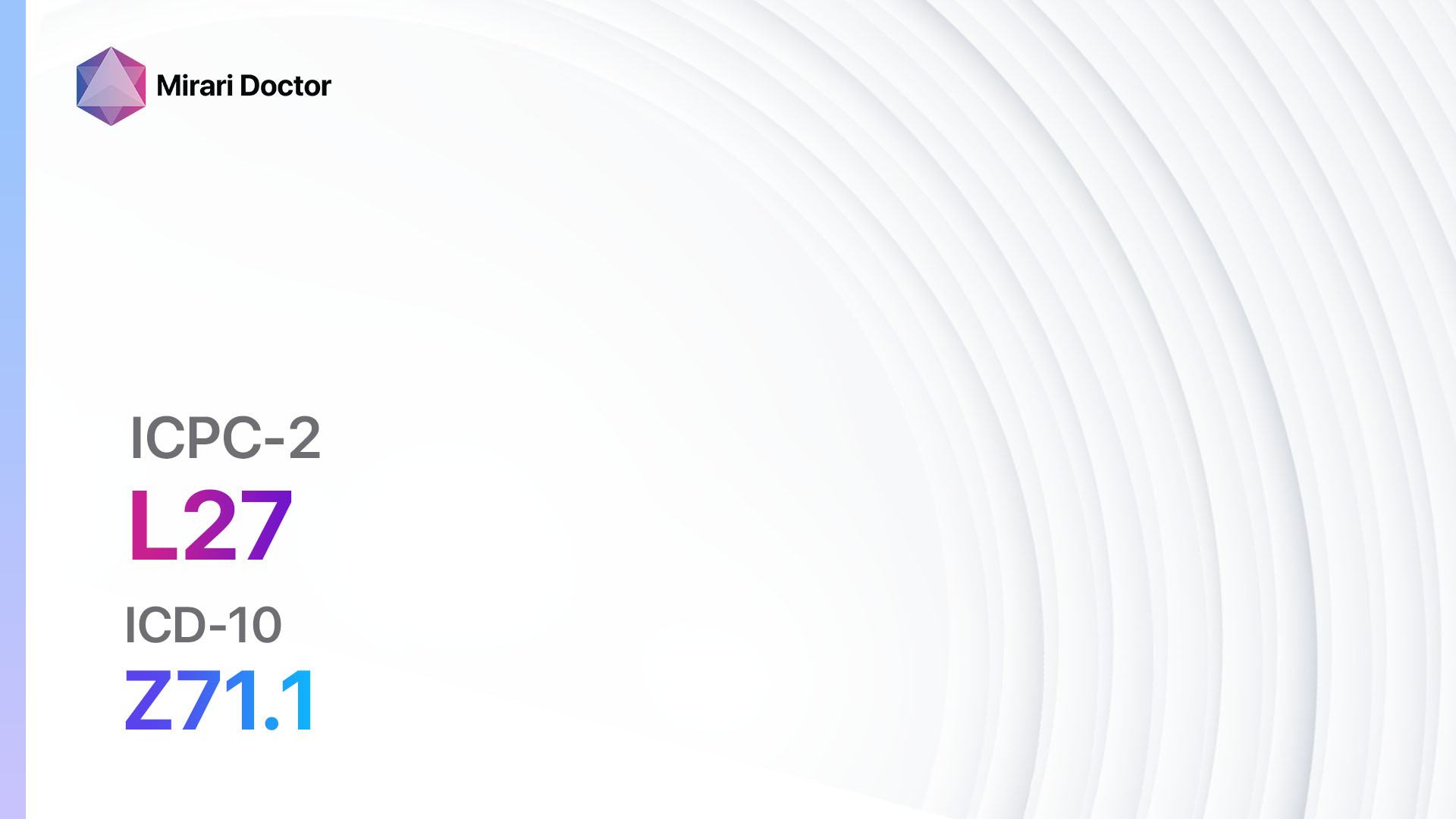
Introduction
Fear of musculoskeletal disease can cause significant distress and anxiety in individuals[1]. This guide aims to provide a comprehensive approach to diagnosing and managing this fear. By understanding the symptoms, causes, and diagnostic steps, healthcare providers can effectively address the concerns of their patients and provide appropriate interventions[2].
Codes
- ICPC-2 Code: L27 Fear musculoskeletal disease other[3]
- ICD-10 Code: Z71.1 Person with feared complaint in whom no diagnosis is made[4]
Symptoms
- Fear and anxiety related to musculoskeletal disease[5]
- Excessive worry about developing musculoskeletal conditions[6]
- Preoccupation with physical symptoms and sensations[7]
- Avoidance of activities or situations that may increase the risk of musculoskeletal disease[8]
Causes
- Previous traumatic musculoskeletal injury[9]
- Family history of musculoskeletal disease[10]
- Personal history of musculoskeletal conditions
- Exposure to media or information about musculoskeletal diseases
- Generalized anxiety disorder or other mental health conditions
Diagnostic Steps
Medical History
- Gather information about the patient’s fear and anxiety related to musculoskeletal disease
- Assess for any risk factors, such as previous injuries or family history of musculoskeletal conditions
- Identify any comorbid mental health conditions, such as generalized anxiety disorder
Physical Examination
- Perform a thorough physical examination to assess for any signs of musculoskeletal disease
- Evaluate range of motion, strength, and any abnormalities in the musculoskeletal system
- Look for any physical signs of injury or inflammation
Laboratory Tests
- No specific laboratory tests are indicated for the diagnosis of fear of musculoskeletal disease
- However, blood tests may be ordered to rule out any underlying medical conditions that could be contributing to the fear and anxiety
Diagnostic Imaging
- Diagnostic imaging is not typically necessary for the diagnosis of fear of musculoskeletal disease
- However, if there are specific concerns or symptoms that warrant further investigation, imaging modalities such as X-rays, ultrasound, CT scans, or MRIs may be considered
Other Tests
- No other specific diagnostic tests are indicated for the diagnosis of fear of musculoskeletal disease
- However, additional tests may be ordered based on the patient’s clinical presentation and the presence of any other symptoms or concerns
Follow-up and Patient Education
- Schedule regular follow-up appointments to monitor the patient’s progress and address any ongoing concerns
- Provide patient education about musculoskeletal health, including preventive measures, lifestyle modifications, and self-care strategies
- Offer reassurance and support to help alleviate the patient’s fear and anxiety
Possible Interventions
Traditional Interventions
Medications:
Top 5 drugs for fear of musculoskeletal disease:
- Selective serotonin reuptake inhibitors (SSRIs) (e.g., Fluoxetine, Sertraline):
- Cost: Generic versions can be $10-$50/month.
- Contraindications: Hypersensitivity to SSRIs, concurrent use of monoamine oxidase inhibitors (MAOIs).
- Side effects: Nausea, headache, insomnia.
- Severe side effects: Serotonin syndrome, suicidal thoughts.
- Drug interactions: MAOIs, other serotonergic medications.
- Warning: Close monitoring for worsening depression or emergence of suicidal thoughts.
- Benzodiazepines (e.g., Diazepam, Lorazepam):
- Cost: Generic versions can be $10-$50/month.
- Contraindications: Acute narrow-angle glaucoma, severe respiratory insufficiency.
- Side effects: Sedation, dizziness, confusion.
- Severe side effects: Respiratory depression, paradoxical reactions.
- Drug interactions: Alcohol, opioids.
- Warning: Risk of dependence and withdrawal symptoms with long-term use.
- Beta-blockers (e.g., Propranolol, Atenolol):
- Cost: Generic versions can be $10-$30/month.
- Contraindications: Severe bradycardia, heart block, uncontrolled heart failure.
- Side effects: Fatigue, dizziness, bradycardia.
- Severe side effects: Bronchospasm, heart block.
- Drug interactions: Calcium channel blockers, insulin.
- Warning: Should not be abruptly stopped.
- Antidepressants (e.g., Amitriptyline, Venlafaxine):
- Cost: Generic versions can be $10-$50/month.
- Contraindications: Hypersensitivity to tricyclic antidepressants, recent myocardial infarction.
- Side effects: Dry mouth, constipation, blurred vision.
- Severe side effects: Cardiac arrhythmias, serotonin syndrome.
- Drug interactions: MAOIs, other serotonergic medications.
- Warning: Close monitoring for worsening depression or emergence of suicidal thoughts.
- Anxiolytics (e.g., Buspirone, Hydroxyzine):
- Cost: Generic versions can be $10-$30/month.
- Contraindications: Hypersensitivity to anxiolytics, narrow-angle glaucoma.
- Side effects: Drowsiness, dizziness, headache.
- Severe side effects: Serotonin syndrome, extrapyramidal symptoms.
- Drug interactions: MAOIs, other sedating medications.
- Warning: Risk of dependence and withdrawal symptoms with long-term use.
Alternative Drugs:
- Cognitive-behavioral therapy (CBT): A form of psychotherapy that helps individuals identify and change negative thought patterns and behaviors associated with fear of musculoskeletal disease. Cost: Varies depending on the therapist and location.
- Mindfulness-based stress reduction (MBSR): A technique that combines mindfulness meditation, body awareness, and yoga to reduce stress and anxiety. Cost: Varies depending on the program and location.
- Support groups: Joining a support group with individuals who have similar fears and concerns can provide a sense of community and understanding. Cost: Varies depending on the organization or group.
Surgical Procedures:
- Surgical procedures are not indicated for the treatment of fear of musculoskeletal disease.
Alternative Interventions
- Cognitive-behavioral therapy (CBT): A form of psychotherapy that helps individuals identify and change negative thought patterns and behaviors associated with fear of musculoskeletal disease. Cost: Varies depending on the therapist and location.
- Mindfulness-based stress reduction (MBSR): A technique that combines mindfulness meditation, body awareness, and yoga to reduce stress and anxiety. Cost: Varies depending on the program and location.
- Support groups: Joining a support group with individuals who have similar fears and concerns can provide a sense of community and understanding. Cost: Varies depending on the organization or group.
- Relaxation techniques: Techniques such as deep breathing, progressive muscle relaxation, and guided imagery can help reduce anxiety and promote relaxation. Cost: Free or low-cost resources available online or through apps.
- Exercise and physical activity: Engaging in regular exercise and physical activity can help reduce anxiety and improve overall well-being. Cost: Varies depending on the chosen activity or gym membership.
Lifestyle Interventions
- Healthy diet: Encourage a balanced diet rich in fruits, vegetables, whole grains, and lean proteins to support overall health and well-being. Cost: Varies depending on food choices and dietary preferences.
- Regular exercise: Engaging in regular physical activity can help reduce anxiety and improve musculoskeletal health. Cost: Varies depending on the chosen activity or gym membership.
- Stress management: Encourage stress management techniques such as deep breathing, meditation, and relaxation exercises to help reduce anxiety. Cost: Free or low-cost resources available online or through apps.
- Sleep hygiene: Promote good sleep habits, such as maintaining a regular sleep schedule, creating a relaxing bedtime routine, and creating a comfortable sleep environment. Cost: Free or low-cost strategies.
- Avoidance of triggers: Encourage individuals to identify and avoid triggers that may exacerbate their fear and anxiety related to musculoskeletal disease. Cost: No additional cost.
It is important to note that the cost ranges provided are approximate and may vary depending on the location and availability of the interventions.
Mirari Cold Plasma Alternative Intervention
Understanding Mirari Cold Plasma
- Safe and Non-Invasive Treatment: Mirari Cold Plasma is a safe and non-invasive treatment option for various skin conditions. It does not require incisions, minimizing the risk of scarring, bleeding, or tissue damage.
- Efficient Extraction of Foreign Bodies: Mirari Cold Plasma facilitates the removal of foreign bodies from the skin by degrading and dissociating organic matter, allowing easier access and extraction.
- Pain Reduction and Comfort: Mirari Cold Plasma has a local analgesic effect, providing pain relief during the treatment, making it more comfortable for the patient.
- Reduced Risk of Infection: Mirari Cold Plasma has antimicrobial properties, effectively killing bacteria and reducing the risk of infection.
- Accelerated Healing and Minimal Scarring: Mirari Cold Plasma stimulates wound healing and tissue regeneration, reducing healing time and minimizing the formation of scars.
Mirari Cold Plasma Prescription
Video instructions for using Mirari Cold Plasma Device – L27 Fear musculoskeletal disease other (ICD-10:Z71.1)
| Mild | Moderate | Severe |
| Mode setting: 2 (Wound Healing) Location: 0 (Localized) Morning: 15 minutes, Evening: 15 minutes |
Mode setting: 2 (Wound Healing) Location: 0 (Localized) Morning: 30 minutes, Lunch: 30 minutes, Evening: 30 minutes |
Mode setting: 2 (Wound Healing) Location: 0 (Localized) Morning: 30 minutes, Lunch: 30 minutes, Evening: 30 minutes |
| Mode setting: 9 (Arthritis) Location: 0 (Localized) Morning: 15 minutes, Evening: 15 minutes |
Mode setting: 9 (Arthritis) Location: 0 (Localized) Morning: 30 minutes, Lunch: 30 minutes, Evening: 30 minutes |
Mode setting: 9 (Arthritis) Location: 0 (Localized) Morning: 30 minutes, Lunch: 30 minutes, Evening: 30 minutes |
| Mode setting: 7 (Immunotherapy) Location: 1 (Sacrum) Morning: 15 minutes, Evening: 15 minutes |
Mode setting: 7 (Immunotherapy) Location: 1 (Sacrum) Morning: 30 minutes, Lunch: 30 minutes, Evening: 30 minutes |
Mode setting: 7 (Immunotherapy) Location: 1 (Sacrum) Morning: 30 minutes, Lunch: 30 minutes, Evening: 30 minutes |
| Total Morning: 45 minutes approx. $7.50 USD, Evening: 45 minutes approx. $7.50 USD |
Total Morning: 90 minutes approx. $15 USD, Lunch: 90 minutes approx. $15 USD, Evening: 90 minutes approx. $15 USD, |
Total Morning: 90 minutes approx. $15 USD, Lunch: 90 minutes approx. $15 USD, Evening: 90 minutes approx. $15 USD, |
| Usual treatment for 7-60 days approx. $105 USD – $900 USD | Usual treatment for 6-8 weeks approx. $1,890 USD – $2,520 USD |
Usual treatment for 3-6 months approx. $4,050 USD – $8,100 USD
|
 |
|
Use the Mirari Cold Plasma device to treat Fear musculoskeletal disease other effectively.
WARNING: MIRARI COLD PLASMA IS DESIGNED FOR THE HUMAN BODY WITHOUT ANY ARTIFICIAL OR THIRD PARTY PRODUCTS. USE OF OTHER PRODUCTS IN COMBINATION WITH MIRARI COLD PLASMA MAY CAUSE UNPREDICTABLE EFFECTS, HARM OR INJURY. PLEASE CONSULT A MEDICAL PROFESSIONAL BEFORE COMBINING ANY OTHER PRODUCTS WITH USE OF MIRARI.
Step 1: Cleanse the Skin
- Start by cleaning the affected area of the skin with a gentle cleanser or mild soap and water. Gently pat the area dry with a clean towel.
Step 2: Prepare the Mirari Cold Plasma device
- Ensure that the Mirari Cold Plasma device is fully charged or has fresh batteries as per the manufacturer’s instructions. Make sure the device is clean and in good working condition.
- Switch on the Mirari device using the power button or by following the specific instructions provided with the device.
- Some Mirari devices may have adjustable settings for intensity or treatment duration. Follow the manufacturer’s instructions to select the appropriate settings based on your needs and the recommended guidelines.
Step 3: Apply the Device
- Place the Mirari device in direct contact with the affected area of the skin. Gently glide or hold the device over the skin surface, ensuring even coverage of the area experiencing.
- Slowly move the Mirari device in a circular motion or follow a specific pattern as indicated in the user manual. This helps ensure thorough treatment coverage.
Step 4: Monitor and Assess:
- Keep track of your progress and evaluate the effectiveness of the Mirari device in managing your Fear musculoskeletal disease other. If you have any concerns or notice any adverse reactions, consult with your health care professional.
Note
This guide is for informational purposes only and should not replace the advice of a medical professional. Always consult with your healthcare provider or a qualified medical professional for personal advice, diagnosis, or treatment. Do not solely rely on the information presented here for decisions about your health. Use of this information is at your own risk. The authors of this guide, nor any associated entities or platforms, are not responsible for any potential adverse effects or outcomes based on the content.
Mirari Cold Plasma System Disclaimer
- Purpose: The Mirari Cold Plasma System is a Class 2 medical device designed for use by trained healthcare professionals. It is registered for use in Thailand and Vietnam. It is not intended for use outside of these locations.
- Informational Use: The content and information provided with the device are for educational and informational purposes only. They are not a substitute for professional medical advice or care.
- Variable Outcomes: While the device is approved for specific uses, individual outcomes can differ. We do not assert or guarantee specific medical outcomes.
- Consultation: Prior to utilizing the device or making decisions based on its content, it is essential to consult with a Certified Mirari Tele-Therapist and your medical healthcare provider regarding specific protocols.
- Liability: By using this device, users are acknowledging and accepting all potential risks. Neither the manufacturer nor the distributor will be held accountable for any adverse reactions, injuries, or damages stemming from its use.
- Geographical Availability: This device has received approval for designated purposes by the Thai and Vietnam FDA. As of now, outside of Thailand and Vietnam, the Mirari Cold Plasma System is not available for purchase or use.
References
- Leeuw M, Goossens ME, Linton SJ, Crombez G, Boersma K, Vlaeyen JW. The fear-avoidance model of musculoskeletal pain: current state of scientific evidence. J Behav Med. 2007;30(1):77-94. doi:10.1007/s10865-006-9085-0
- Vlaeyen JW, Linton SJ. Fear-avoidance and its consequences in chronic musculoskeletal pain: a state of the art. Pain. 2000;85(3):317-332. doi:10.1016/S0304-3959(99)00242-0
- ICPC-2 Code L27 Fear musculoskeletal disease other. RxReasoner. https://www.rxreasoner.com/icpc2codes/L27. Accessed June 22, 2024.
- ICD-10 Code Z71.1 Person with feared complaint in whom no diagnosis is made. ICD-10 Data. https://www.icd10data.com/ICD10CM/Codes/Z00-Z99/Z69-Z76/Z71-/Z71.1. Accessed June 22, 2024.
- Asmundson GJ, Norton PJ, Norton GR. Beyond pain: the role of fear and avoidance in chronicity. Clin Psychol Rev. 1999;19(1):97-119. doi:10.1016/s0272-7358(98)00034-8
- Crombez G, Vlaeyen JW, Heuts PH, Lysens R. Pain-related fear is more disabling than pain itself: evidence on the role of pain-related fear in chronic back pain disability. Pain. 1999;80(1-2):329-339. doi:10.1016/s0304-3959(98)00229-2
- Vlaeyen JW, Linton SJ. Fear-avoidance model of chronic musculoskeletal pain: 12 years on. Pain. 2012;153(6):1144-1147. doi:10.1016/j.pain.2011.12.009
- Leeuw M, Goossens ME, van Breukelen GJ, et al. Exposure in vivo versus operant graded activity in chronic low back pain patients: results of a randomized controlled trial. Pain. 2008;138(1):192-207. doi:10.1016/j.pain.2007.12.009
- Chou R, Shekelle P. Will this patient develop persistent disabling low back pain?. JAMA. 2010;303(13):1295-1302. doi:10.1001/jama.2010.344
- Hestbaek L, Leboeuf-Yde C, Kyvik KO. Is comorbidity in adolescence a predictor for adult low back pain? A prospective study of a young population. BMC Musculoskelet Disord. 2006;7:29. Published 2006 Mar 16. doi:10.1186/1471-2474-7-29
Related articles
Made in USA



